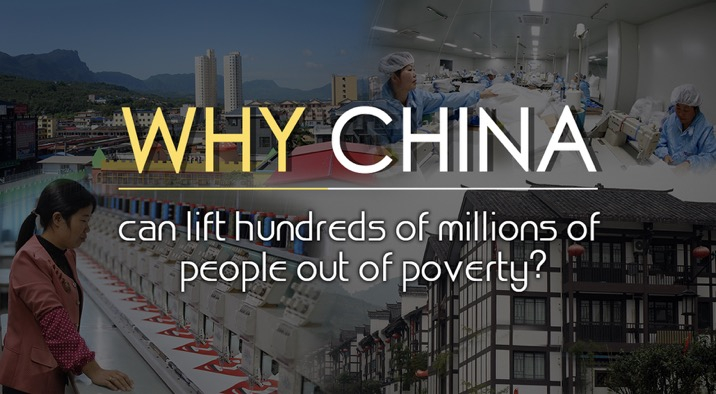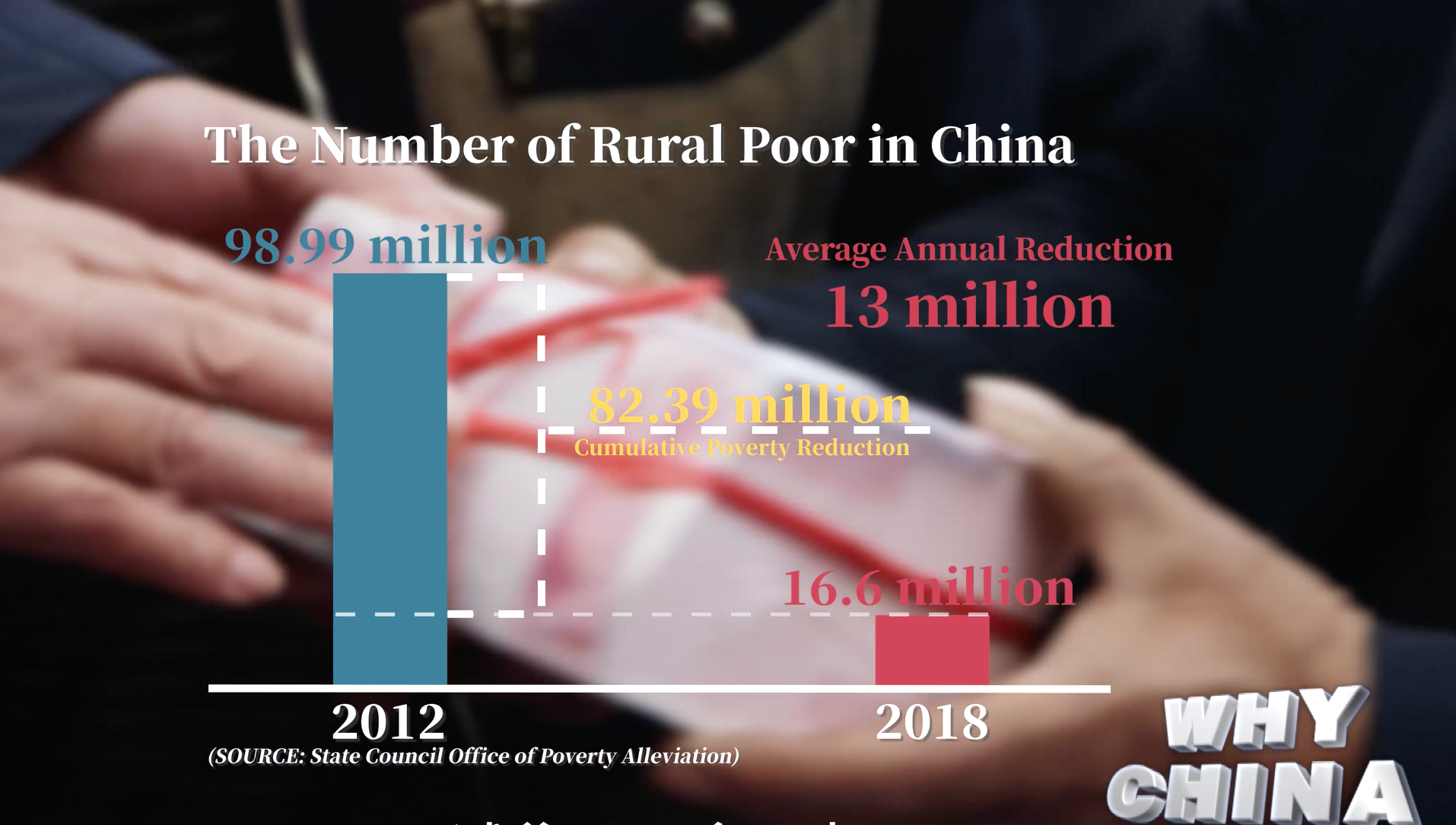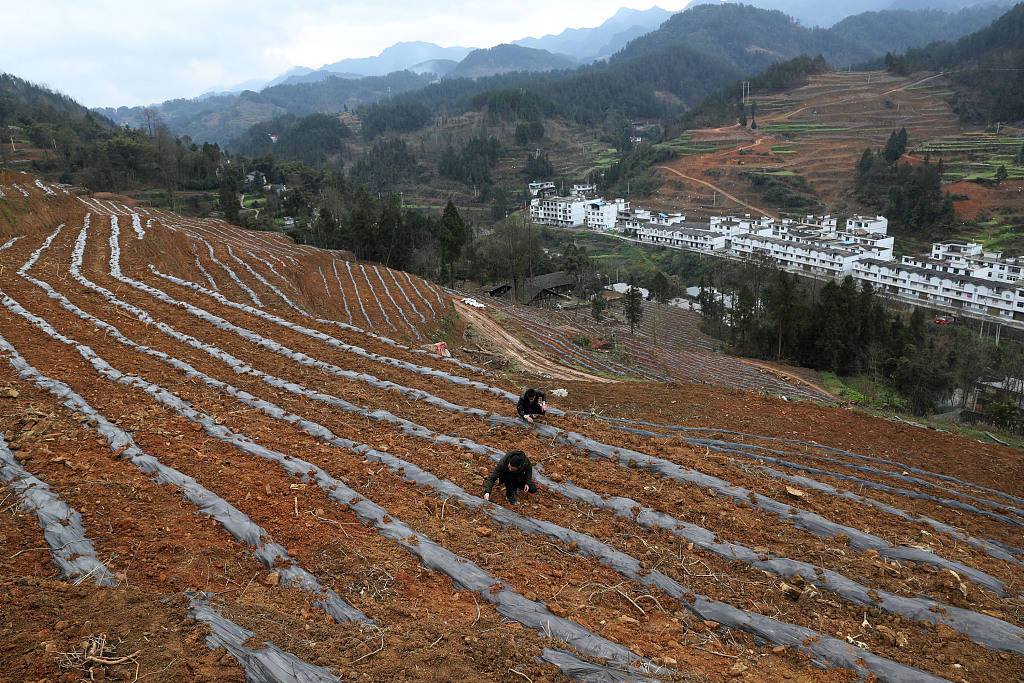

Lanping Bai and Pumi Autonomous County, in southwest China's Yunnan Province, used to be one of the most impoverished regions in the country. Walking around villages in the county, one saw dilapidated houses with leaking roofs and bumpy dirt roads.
But by the end of 2018, residents in Lanping’s rural areas saw their annual income increase from 4,406 yuan in 2014 to 6,515 yuan, an increase of more than 2,000 yuan in four years.
Lanping's transformation reflects the larger socio-economic changes that China has gone through – from an agrarian backwater into an industrial powerhouse. Due to rapid industrialization and persistent poverty alleviation efforts by the government, more than 800 million people have been lifted out of poverty during China’s reform and opening-up process.
From 1978 to 2018, the number of impoverished people dropped from 770 million to 16.6 million, and the poverty rate dropped from 97.5 percent to 1.7 percent.

The number of impoverished people in rural areas in China has shown a big drop from 2012 to 2018. /CGTN Photo
"Forty years ago, China’s poverty headcount ratio is about 97 percent," said Xu Jin, a professor at the China Institute for South-South Cooperation in Agriculture at China Agricultural University. "If we don’t have this poverty reduction process, we cannot imagine (what China is like today)."
Poverty is most severe in China’s geographic margins. The harsh natural conditions, absence of fertile land and lack of access to fresh water in some parts of China's western regions precluded any possibility of economic development through farming, not to mention industrial development.
In the mountainous deep south or the rocky deep north, modernity barely left a trail.
This problem plagued Lanping as well. The county is prone to natural disasters and because population was scattered around the county, the cost of infrastructure development would be too high.
In response, the Chinese government introduced ecological migration in 2000, relocating people from lands distressed by a poor ecological environment to newly built residential communities on more fertile land. Residents in Lanping were relocated to modern apartment complexes with many of their consumer electronics provided free by the local government.

Farmers work on the farmland in an impoverished area in southwest China's Chongqing Municipality. /VCG Photo
To address various causes of poverty, different measures must be combined to tackle its root causes, said Xu. The Chinese government has introduced six approaches to poverty alleviation: production, migration, ecological conservation, education, minimal allowances and mass public participation.
In Lanping, apart from migration to more fertile land, residents also tried ecological conservation to promote tourism and boost local revenue.
China vows to eliminate absolute poverty – living on less than 1 dollar a day – by the end of 2020. But achieving the last mile can be difficult since many of those left in poverty are afflicted by physical or mental ailments.
To lift the last several million requires no less of an effort than helping the billions whose lives have now been transformed.

Copyright © 2018 CGTN. Beijing ICP prepared NO.16065310-3
Copyright © 2018 CGTN. Beijing ICP prepared NO.16065310-3